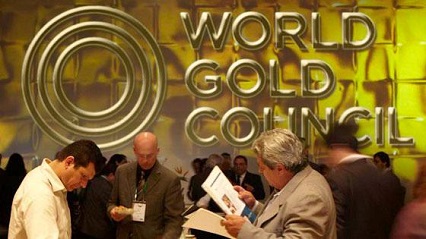The World Gold Council’s latest Gold Demand Trends Report reveals gold ETFs had their strongest quarterly inflows of 269t since Q3 2020, more than reversing the 173t annual net outflow from 2021, and driven in part by the rising gold price

The global gold market saw a solid start to 2022, with first quarter demand (excluding OTC) up 34% year-on-year, thanks to strong ETF flows, reflecting gold’s status as a safe haven investment during times of geopolitical and economic uncertainty.
Geopolitical crises weighed heavily on the global economy and reinvigorated investor interest, pushing the gold price briefly to US$2,070/oz in March, just shy of its all-time high. The World Gold Council’s latest Gold Demand Trends Report reveals gold ETFs had their strongest quarterly inflows of 269t since Q3 2020, more than reversing the 173t annual net outflow from 2021, and driven in part by the rising gold price.
Meanwhile, gold bar and coin demand was 11% above its five-year average at 282t. However renewed lockdowns in China and high prices in Turkey contributed to a 20% year-on-year decline, compared to the very strong Q1 2021.
Turning to the jewellery sector, global gold demand fell 7% year-on-year to 474t, driven primarily by softer demand in China and India. Despite a strong performance in China over the lunar New Year period, performance was later dampened by Covid outbreaks in February and March, leading to strict lockdowns as China continues to follow its zero-Covid policy.
In India, a fall in the number of weddings and lack of auspicious days in the first quarter had a direct impact on gold purchasing in the country. This, coupled with rising gold prices globally, prompted many Indian consumers to hold back on their purchases.
The demand for gold in technology hit a four-year high of 82t, up 1% on Q1 2021. While the sector saw modest growth, it was not free from challenges. Major financial and industrial hubs, such as Shanghai, were under renewed lockdowns, which impacted the electronics supply chain.
Net buying by central banks more than doubled from the previous quarter, adding over 84t to official gold reserves during Q1 2022, with buying in the sector dominated by countries such as Egypt and Turkey. While 29% lower than Q1 2021, central banks continue to value gold’s performance during times of uncertainty.
Total gold supply increased by 4% year-on-year. This was driven by strong mine production, which hit 856t. In addition, recycling rose 15% on the previous year, reaching 310t in response to higher gold prices.
Louise Street, Senior Analyst EMEA at the World Gold Council commented, “The first quarter of 2022 has been a turbulent one, marked by geopolitical crises, supply chain difficulties and surging inflation. These global events and market conditions have solidified gold’s status as a safe haven holding, not just for investors but also for retail consumers thanks to its unique position as a dual-natured asset class.
“Given the current market dynamics, investment demand is expected to remain strong as the combination of high inflation and heightened geopolitical tensions will likely fuel demand for gold amongst investors. On the other hand, consumers are facing the global cost of living crisis, meaning many will reconsider how they spend their money. While consumer demand has been recovering from Covid-inflicted weakness, continued growth in jewellery demand could be stifled by rising costs and a general economic slowdown.”
The Gold Demand Trends Q1 2022 report, which includes comprehensive data provided by Metals Focus, can be viewed here: https://www.gold.org/goldhub/research/gold-demand-trends/gold-demand-trends-q1-2022
Be the first to comment